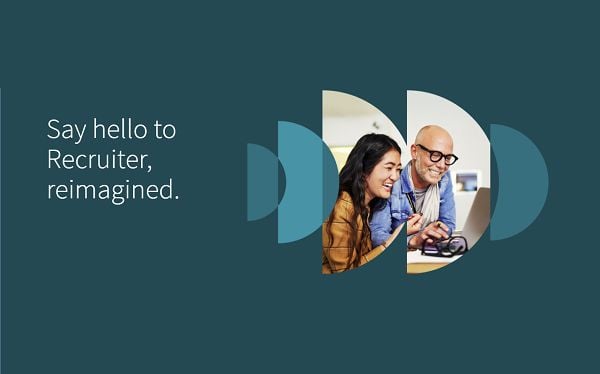Given that LinkedIn is owned by Microsoft, which has become a major investor in ChatGPT creator OpenAI, it’s little surprise to see the professional social network also leaning into AI to maximize its offerings.
Today, LinkedIn has unveiled its new “Recruiter 2024” project, which will add AI elements into its recruitment and hiring offerings, providing new ways to utilize automated insights and tools within your HR process.
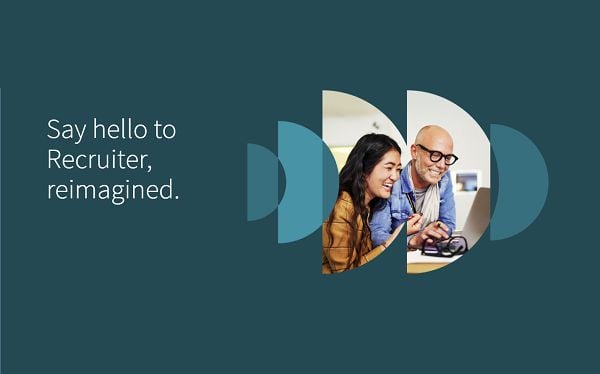
As explained by LinkedIn:
“By pairing generative AI with our unique insights gained from the more than 950 million professionals, 65 million companies, and 40,000 skills on our platform, we’ve reimagined our Recruiter product to help our customers find that short list of qualified candidates – faster.”
The main element of the new Recruiter process is natural language commands in-app, so you can pose statements like “Find me a senior growth marketing leader” and Recruiter can guide you through the rest.
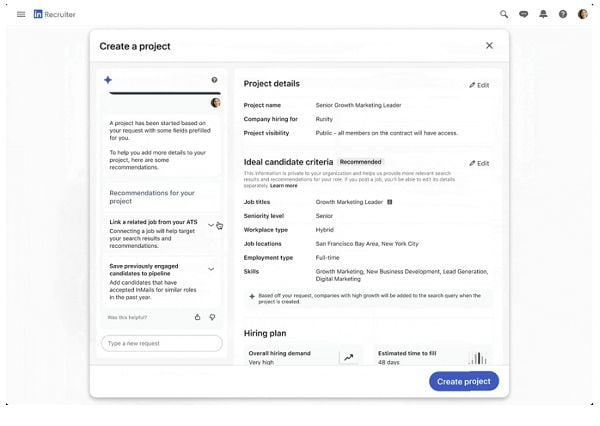
As you can see in this example, the new Recruiter interface will include an ever-present, ChatGPT-like prompt window at the left-hand side of the screen, so you can ask it any questions to dig deeper into specific elements.
“And with the unique insights our members have shared with us like if they’re open to work and interested in a company because of its values, we can provide real-time, personalized nudges to help expand or modify the search. For example, we can suggest expanding the targeted location, adding the fastest-growing skills based on the role, or recommending if a role should be hybrid, based on the talent in the area.”
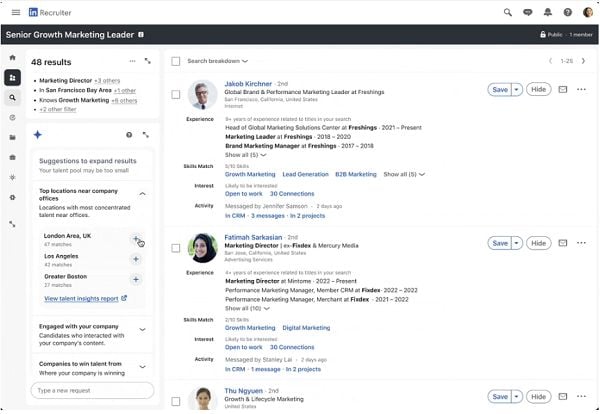
The process will make it much easier to sift through potential candidates, and find the right people, based on LinkedIn data and insights, which could be a big boost in your process. Of course, you’ll still likely want to refine key elements, and tweak any AI-created job ad copy (another element of LinkedIn’s evolving AI tools). But it could provide all new opportunities and considerations within your recruitment process, which could have a big impact.
Note the use of “could”. Various AI tools have had various levels of applicability, and it’s impossible to say, definitively, that this will be an evolutionary leap, of sorts.
In addition to this, LinkedIn’s also launching “CRM Connect”, which will integrate LinkedIn Recruiter and your CRM system to merge the functionalities and processes of both. LinkedIn’s currently trialing this with a small set of partner businesses.
Finally, LinkedIn’s also integrating generative AI into LinkedIn Learning, via a new AI-powered chatbot experience in-stream, that’ll provide real-time advice, and tailored content recommendations, “all personalized for you based on your job title, your career goal, and the skills you follow”.
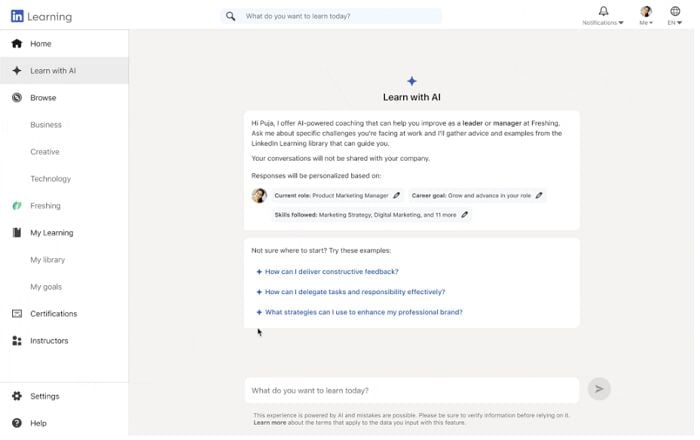
So now, you’ll be able to get more specific guidance on your learning options, which LinkedIn is hoping will act like having a career coach, of sorts, available at any time.
Again, a lot of the proof will be in the process, and it’s hard to say how effective these types of prompts will be, across all industries and specialties, till we see them in action. They could be amazing, and point you in the right direction every time, or they could be off, depending on exactly how LinkedIn’s AI system comes to its conclusions.
The only way to know will be to try it out.
LinkedIn says that it’s launching the first stage of its new AI chatbot process with two of its most in-demand skills: leadership and management.
“Learners can pose a question like: How can I delegate tasks and responsibility effectively? Instead of giving you a one-size-fits-all answer, it will ask you clarifying questions to more deeply understand your specific situation and experience and then offer advice, examples, and feedback based on hundreds of hours of content from our expert instructors.”
LinkedIn says that it will look to expand and further tailor its LinkedIn Learning chatbot experience over the coming months, which could also include chatbots built on responses from specific industry experts.
Overall, these are interesting additions, which, at least in theory, should have a big impact on LinkedIn’s recruitment and learning tools. But they will also take some trial and error to evolve, and ensure they apply to all industries and users.
Either way, they’re interesting experiments, which utilize generative AI in the most effective way, as supplemental tools that can provide assistance and additional prompts.

